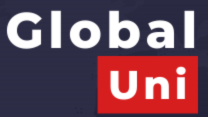If you’ve hung around any sector conference this autumn, you’ll know that the 2024 UCAS End of Cycle data has been awaited with more interest than usual this time around.
Staff in some providers more used to catering for the needs of students who may not have academically blossomed in time to excel at traditional level three qualifications have told me how surprised they were to see applicants tempted by offers from more conventionally prestigious universities.
If you are now marveling how I managed to avoid the word “tariff” in the last paragraph, you’ve stumbled on the exact issue – universities behaving in ways that belie their traditional position in the entry tariff hierarchy (indeed, the whole concept of a “high tariff provider” is faintly problematic as I’ve noted before)
Today’s release of sector data offers us a more detailed glimpse as to what is going on. You’ll be familiar with the data from the end of clearing showing a sharp uptick in “high tariff” recruitments, and corresponding drops at a medium and low tariff level. What else can we see, now we have the sector level end of cycle detail?
Acceptance route
If higher tariff providers have been fishing in deeper than usual waters, the evidence is that this was the strategy all along.
We see a huge uplift in the number of applicants accepted onto their firm main stream choice – in other words, applicants are ending up in the place they were intending to go all along. Some 123,835 UK applicants got their preferred place at a high tariff provider – the highest number on record outside of 2021.
This suggests either that initial offers were lower than usual, or universities were more likely to overlook a less strong A level performance than in previous years. Though this wouldn’t have been the active “poaching” that some have been suggesting, it does represent a cut in the number of underperforming applicants free to consider other options at other providers.
Provider popularity and offer making behavior
If more applicants took up their firm place at a high tariff provider, it stands to reason that more applicants were applying there – and this is indeed what we see. The highest number of 18 year old UKs ever made applications (some 639,085) to a high tariff provider in 2024 – and these universities responded by making the highest number of offers on record (442,015). In contrast applications to medium tariff providers remained steady (albeit with a small rise in offer making, while those to low tariff providers followed a three year pattern of decline (with offers remaining broadly stable).
It’s worth noting that outside of the traditional 18 year old UK entrant pool, lower tariff providers still dominate, although this is less of a divide than in previous years: and scant comfort in a year where mature undergraduate UK applicants continue to fall.
A level performance
Incredibly, the above represents pretty much all of the information we get on tariff groups in today’s release – so from here on we are looking at all providers rather than making splits.
These next charts plot achieved A level points for UK domiciled 18 year olds, with the year shown by the colour of the line (2024 is orange, with earlier years ranging from dark to light blue. The dominant (modal) A level points score achieved by accepted applicants was 12 (equivalent to three Bs) – identical to last year but slightly up on the back end of last decade (you can also see the anomalies in the three examishambles pandemic years).
Higher achievement overall is likely to benefit higher tariff provider recruitment – if applicants are doing better than expected, more conditions attached to offers are being met.
But are applicants doing better than expected? In short, no.
Broadly speaking, placed applicants were likely to be two points (the equivalent of two A level grades) down from where teachers predicted them to be. This is the same as last year (and 2019, the last “normal” year before that), but down on a historic norm closer to being down one grade. Applicants are doing worse than expected, meaning that (as we suspected) at some point in the process high tariff providers must be dropping requirements.
Access and participation
Looking at accepted applicants by TUNDRA it is the best year on record for quintile 1 – who made up a little under 13 per cent of all accepted applicants, the highest proportion on record.
But here’s a thing – the most likely group to use clearing to secure a place is quintile 5 (those from the most advantaged backgrounds) – some 12.6 per cent of placed quintile 5 applicants entered via main scheme clearing, compared to 8.7 per cent from quintile 1. However, applicants in all quintiles are most likely to get their firm place confirmed.
International applications
Again, we only get this at a sector level for now – but we have enough to see the striking fall in placed students from Nigeria (particularly), India, and Pakistan. China sees only very sluggish growth.
Fascinatingly the bulk of the decline is seen in mature applicants – 18 year old recruitment appears to be holding up a lot more strongly.
What’s next?
The real End of Cycle excitement will come on 30 January, when we get the provider level numbers to help us understand the ways in which various parts of the sector are responding to some of the recruitment pressures detailed above (and don’t worry, there’ll be a bunch of charts on Wonkhe the following day).
Undergraduate recruitment data is an important part of the puzzle in understanding the wider financial difficulties facing certain providers – even though TRAC data suggests most universities don’t break even on undergraduate tuition income it does represent an important component of annual budgets.




